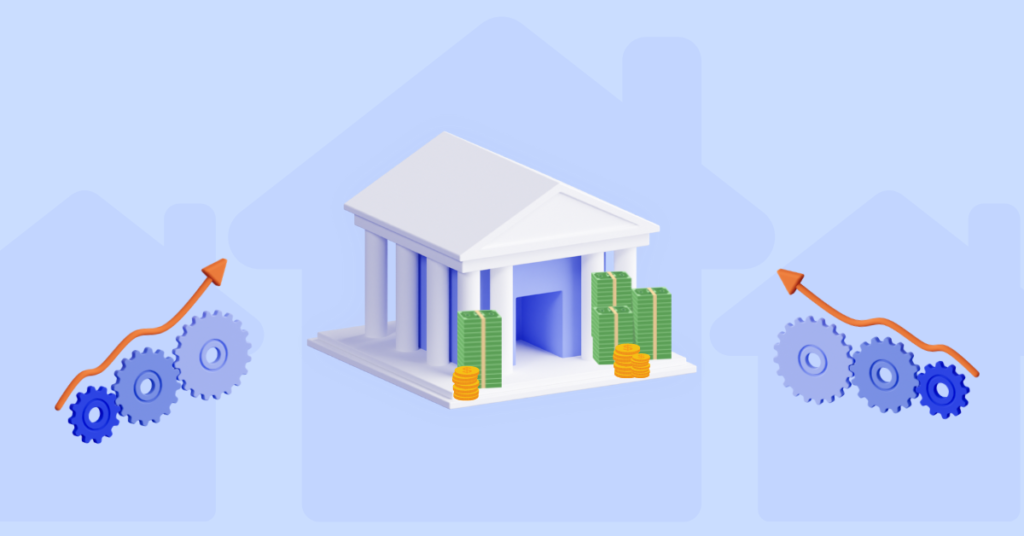2020 was a time of massive change. When Covid hit, organizations of all types had to figure out how to keep running with minimal disruption to their operations.
For some businesses, this was a bigger challenge than others.
While most organizations have to follow regulations of one set or another, take PCI-DSS for processing payments as a common example, industries like banking have a higher bar to clear when it comes to how they protect their customers’ data and transactions.
Due to this extra scrutiny, and frankly the fact that banking has historically been on the more conservative side of technology adoption, these institutions have been slow to change the nature of their internal business processes.
So when the jump to remote working came, banks shifted their business processes across the organization, using a variety of tools to keep service to their customers running.
Interestingly enough, even though they hit some initial snags, banks figured out not only how to survive the transition, but actually thrived as they figured out ways to improve business process efficiency from where they had started before the pandemic.
Let’s see how they did it through the experience of a bank’s call center.

Business Process Challenges During the Transition
Work had always been done, well, at work, and on endpoint devices at the office. Often using a combination of on-prem applications and even older methods of work like phone, fax, or the old face-to-face in person human interaction. If you needed to get a document to Sally in HR, chances are that you may have walked it down the hall to her office.
But when the order came down to go remote, employees found themselves at home using a mix of different systems on their devices. And as you would expect, the transition was not exactly smooth.
Beyond some of the more simplistic issues like having to copy data over manually, they discovered that there were additional business process challenges that arose along the way once they took the opportunity to look through their business intelligence data analytics.
- Bottlenecks Everywhere
The bank’s at-home call center team was the customer front line during the pandemic, and the agents found themselves handling calls from frustrated customers who just wanted to get things done.
They had to then contend with communicating with the management of the bank to get their sign off on certain transactions and account actions.
The problem is that once they left their on-prem environment, they had no viable way of prioritizing what needed to be approved by managers. Furthermore, they quickly realized that everyone was sending documents for approval in different channels. Some went via email while others through shared, sometimes public drives, like Dropbox.
For their part, managers were taking an initial 37% longer to answer back. This number eventually reduced after the initial shock of working from home faded. But they were still wasting time trying to find what was most important to work on, and where it was coming in from.
- Faulty Apps, Frustrated Workers
The next challenge that the team encountered was that certain applications were on the fritz more often than they were working correctly.
Every time an app, website or any other resource failed, it cost the team time and therefore money.
Buggy apps were hardly a new problem for the call center’s IT department. But now they had to spin up a mixture of troubleshooting new web app deployment, as well as getting the staff onboard with them. In other cases, they had to work through a VPN where some services and apps worked better than others.
While these productivity pains impacted business processes, the move to remote impacted the call center’s ability to maintain security and compliance.

Security in Uncertain Circumstances
Along with the challenges concerning how business processes were impacting productivity, the bank’s data security was also affected by the move to remote. The bank now had to worry about how to keep their customers’ data safe while their employees were working essentially unsupervised at home.
Challenges to working at home from a security perspective include:
- Employees could be copying information more easily off of company systems, or even simply writing down personally identifiable information (PII) or payment info.
- Access controls to terminals are not in place at home, this included concerns of family members using work devices and carrying out malicious activities.
- For any transaction that involves a payment card processing, PCI-DSS compliance is a concern. As a financial organization, they have additional regulatory requirements they have to meet like SOX and FFIEC as well as ISO/IEC 2700 and NIST.
As many of the controls that looked at indicators such as working hours or location were not as relevant anymore, the call center’s security team looked for a solution for detecting suspicious activity.
What they found was that the same monitoring tools that helped them to secure their customers also provided valuable insights for fixing their business process challenges.

Achieving Business Process Optimization with Better Visibility and Insights
It was clear to all involved that the early days of the transition were not going to be pretty from a business process perspective. But it was the weeks after the call center employees were up and running and started to hit real productivity challenges that the situation got interesting.
The call center’s management took the same set of User Behavior Analytics (UBA) that they had used for their on-site security controls and expanded its use to identify not just security threats but also areas of weakness that were likely to arise.
- Improving Human and Technology Business Processes
By monitoring usage of web apps and communication like email and messaging, they were able to determine that there were multiple inefficiencies that could be fixed.
For starters, instead of copy and pasting work manually, they had their developers write a script in Excel that would automate the process.
Not all the fixes were technology-dependent. After observing that some employees were more efficient at reviewing and responding to customer inquiries regarding problems with logging into the bank’s website, management directed more of those types of tickets their way. Similarly, they were able to restructure other departments to ensure employees’ soft skills were being tapped to ensure efficient workflows that relied on the workforce working on the tasks they were best at.
Building on the data about how their employees were actually performing helped managers to make decisions that sped up the time to resolution and left customers significantly happier.
By observing how their people were faring with the apps after the first few weeks, they were able to direct resources to fix or replace them with better alternatives that let them spend more time on the phone with customers than tech support.

- Security Benefits
Along with these business process optimization achievements were of course the security benefits.
Having established a new baseline for their at home employees, built on top of their rules for data security from before, the security team was able to set alerts for behavior that fell outside the norm and respond quickly.
They were also able to ensure that sensitive files, data, and systems were fully monitored to keep track of who was handling what, when, and what they were doing with it. In some cases, like the process of payment information or transactions, recorded for compliance purposes.
Catch Up in the Post-Pandemic Hybrid Workplace
After the initial struggles, the bank’s call center succeeded in closing the gap from the pre-Covid times. Now that they are partially back in the office on a hybrid model, they have continued to implement many of the insights that were garnered from the data collected while working remotely.
And while nobody is itching to head back to lockdown mode, their team is ready to transition back to the full remote setup if the situation calls for it.
To learn more about how a UBA solution can help your team to identify opportunities to optimize business processes while strengthening security, reach out and request a Free Trial of the Teramind platform.


